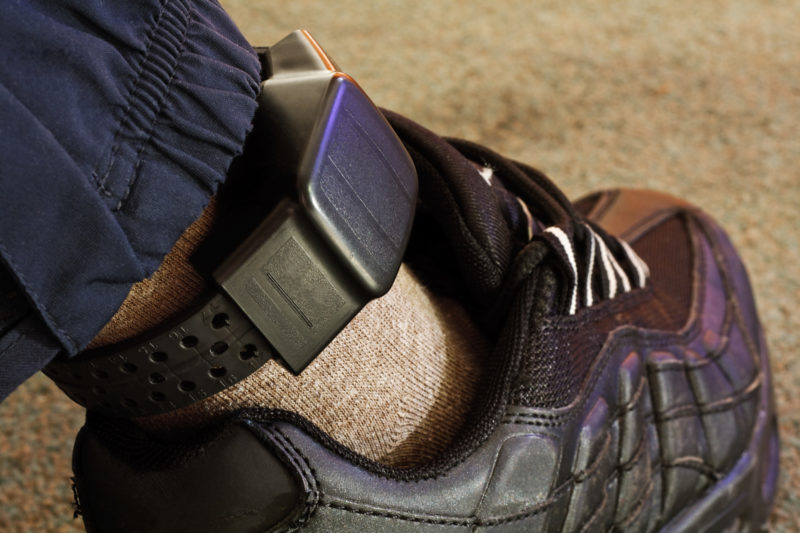The electronic monitoring of criminal offenders by putting them under house arrest has gained increasing attention as a possible way to reduce jail overcrowding while lowering costs. Electronic monitoring and house arrest are spreading rapidly in the United States. Currently, thousands of people are subject to some form of house arrest and electronic monitoring, and these programs have been adopted in over 30 states, including New York. House arrest or home detention usually means any judicially imposed condition that requires an offender to remain in their residence for some portion of the day.
House arrest usually restricts a defendant to their place of residence continuously or during specified hours, and is enforced by appropriate means of surveillance. House arrest can be imposed as a condition of pre-trial release, parole, probation, or sentence. House arrest can range from curfew requirements, to detention during non-working hours, to continuous incarceration in a person’s residence. House arrest is generally thought of as a modern form of punishment that also facilitates the goal of offender rehabilitation.
This option is primarily intended for low risk, minimum security, non-violent offenders. Violent offenders and those convicted of serious sexual offenses are normally excluded from house arrest programs, and some programs avoid those convicted of serious property offenses. Juvenile offenders and DWI offenders have found to be the most appropriate candidates for electronic monitoring and house arrest. Many low-risk offenders DWI offenders who have been granted probation are eligible to participate in a house arrest program during their sentence under the direction of a probation officer.
Types of House Arrest Programs
There are several types of house arrest programs in use in New York and around the country. The first type of program makes use of a curfew for offenders. In this type of program offenders, such a DWI offenders, are required to be at their residence during specified times, usually during the evening hours or weekends. This program usually involves the supervision of a DWI offender who is on probation or parole and there is periodic contact between the offender and their parole officer. The offender’s contact with their probation officer tends to be more frequent under this type of program than in a regular probation situation.
Another form of house arrest is known as home detention. In this type of program, the offender is required to remain at home except for time set aside for activities such as education, employment, or treatment. The court usually restricts the offender’s freedom but may allow time for the offender to support their family or to earn victim restitution money. Home detention restricts an offender’s freedom more than the curfew program and allows for greater control over the offender’s activities.
A similar option is home incarceration. In this type of program, the offender’s home serves as a substitute for jail. Offenders under this type of house arrest must continuously remain at home with extremely limited allowances for religious services, medical emergencies and treatment. Offenders are not allowed to shop, work or have visitors outside specified hours. In many cases, offenders may not even go into their own yards.
Electronic Monitoring
Electronic monitoring systems for criminal offenders, such as DWI offenders under house arrest, were first developed in the early 1980’s by National Incarceration Monitoring and Control Systems, Inc. In 1984, the first large-scale pilot project involving electronic monitoring was implemented in Palm Beach County, Florida. The project involved eighty-seven criminals, most of whom had committed misdemeanor DUI (Driving Under the Influence) offenses. There were only a few problems noted with monitoring the offenders and local officials deemed the project a success. Afterwards, a number of similar programs were developed across the nation.
The most commonly used type of electronic monitoring involves a tamper-resistant bracelet worn by the offender and linked to a computer terminal. To ensure that the offender is obeying the restrictions of house arrest, the authorities telephone the offender, who then inserts the bracelet into a receiver. There are several restrictions regarding eligibility for these types of house arrest programs. The offender needs a telephone, a home address, and in some cases money to pay for the use of the equipment. Another type of electronic monitoring system that does not involve a telephone requires a probation officer to pass by the offender’s house with a special radio receiver. Supervising officers attach a transmitter to the offender’s leg, neck or arm. The transmitter then indicates whether the offender presently is within the home.
Alcohol Monitoring
If a person is charged with or convicted of an alcohol-related DWI offense, the court may require abstinence from alcohol while their case is pending. It is also common in DWI cases for the court to make continued abstinence a term of probation. Some courts require DWI offenders to submit to random or daily breath testing, or to regularly attend Alcoholics Anonymous. Another method courts in New York use to monitor abstinence of DWI offenders is the SCRAM (Secure Continuous Remote Alcohol Monitor) ankle bracelet. The SCRAM ankle bracelet monitors an offender’s blood alcohol level by measuring the ethanol migrating through the surface of the skin. The SCRAM ankle bracelet is worn continuously, takes continuous transdermal measurements, and transmits these measurements to a central monitoring facility.
The attorneys at the law firm of Nave DWI Defense Attorneys are experienced in handling DWI cases. If you need a DWI lawyer who can help you obtain the best possible outcome in your DWI case, call the law firm of Nave DWI Defense Attorneys.
The exclusive purpose of this article is educational and it is not intended as either legal advice or a general solution to any specific legal problem. Corporate offices for Nave DWI Defense Attorneys are located at 432 N. Franklin Street, Suite 80, Syracuse, NY 13204; Telephone No.: 1-866-792-7800. Prior results do not guarantee a similar outcome. Attorney Advertising.





